|
|
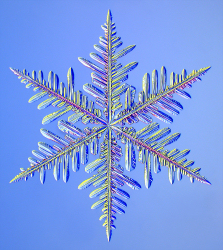
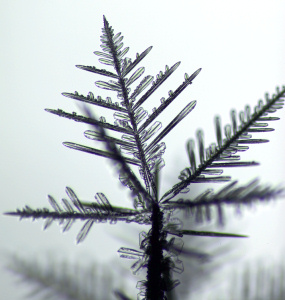 Dendritic Ice Dendritic Ice
The word dendrite means tree-like, and in the case of snow crystals the term refers to branching and sidebranching. For example, the fernlike stellar dendrite
snow crystal on the left exhibits a kind of dendritic sidebranching one
often sees in snow crystals. (For more about stellar dendrites, see the
Guide to Snowflakes).
Ice
dendrites also appear as somewhat independent entities. The image on
the right shows several dendritic branches growing at -15 C (5 F)
in a diffusion chamber at high humidity. This phenomenon is called
free dendrite growth, and
quite a bit of scientific research has gone into understanding how
these structures appear spontaneously during diffusion-limited crystal
growth.
But this isn't the only kind of dendritic structure seen in snow crystals. Fishbones are another. |
| 
Fishbone Dendrites
The
photo on the left shows a cluster of fishbone dendrites growing out
from a wire. These were also found growing in a diffusion chamber at
high humidity, but this time at a temperature of -5 C (23 F).
If
you click on the picture and examine it closely, you will see that the
spiny sidebranches are coming out at rather odd angles.
The -15 C dendrites have long been seen in fernlike stellar dendrites (again, see the Guide to Snowflakes), but the -5 C dendrites were only identified recently. |
| 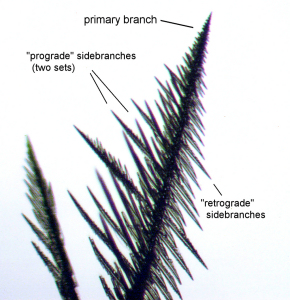 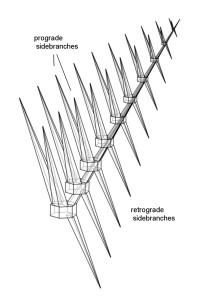
Fishbone Stucture Explained
The
image on the far right shows a single fishbone branch, and the nearer
image shows a sketch of the structure. The hexagonal prisms were added
to the sketch to indicate the ice crystal axes.
Computer models
of faceted crystal growth have reproduced the -15 C dendrites, but not
yet fishbones. You can find more information about the fishbone
crystals here.
Our
goal with these studies is to better understand how ice crystals grow,
and, by extension, how all crystals grow. You can read more about our
scientific motivations at What's it good for?
|
| 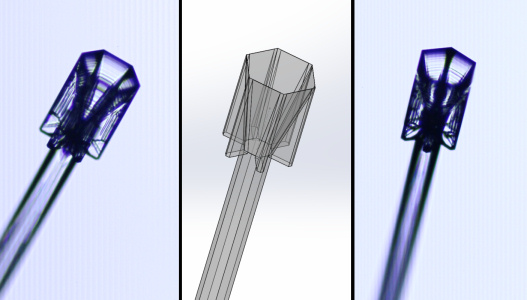 Here
is another example of a complex snow crystal shape we see in the
snowflake lab. This crystal grew at -7 C at the end of an electric needle. Here
is another example of a complex snow crystal shape we see in the
snowflake lab. This crystal grew at -7 C at the end of an electric needle.
The
SolidWorks drawing (center) shows the different parts of the crystal --
a hexagonal cup-shaped crystal with thin walls and six side extensions,
all sitting on top of a solid hexagonal ice needle.
A remaining
scientific challenge is to understand ice crystal growth well enough to
explain and model all the different morphologies that appear at
different temperatures and supersaturations.
[Solidworks drawing by Ryan Potter.] |
| 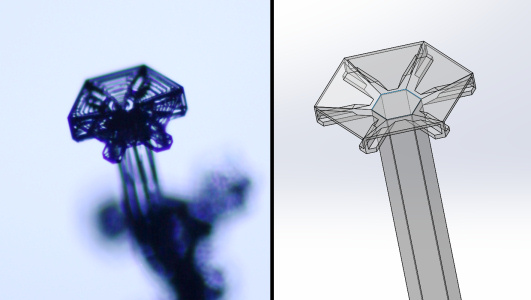 This
crystal grew at -10 C, and it is related to the one above. Instead of a
hexagonal cup, this one is more of a concave hexagonal plate. It has
the same extensions growing down from the corners of the plate, but
this time some "I-beam" structures appear under the plate. This
crystal grew at -10 C, and it is related to the one above. Instead of a
hexagonal cup, this one is more of a concave hexagonal plate. It has
the same extensions growing down from the corners of the plate, but
this time some "I-beam" structures appear under the plate.
[Solidworks drawing by Ryan Potter.] |
| | |
|
|
|
